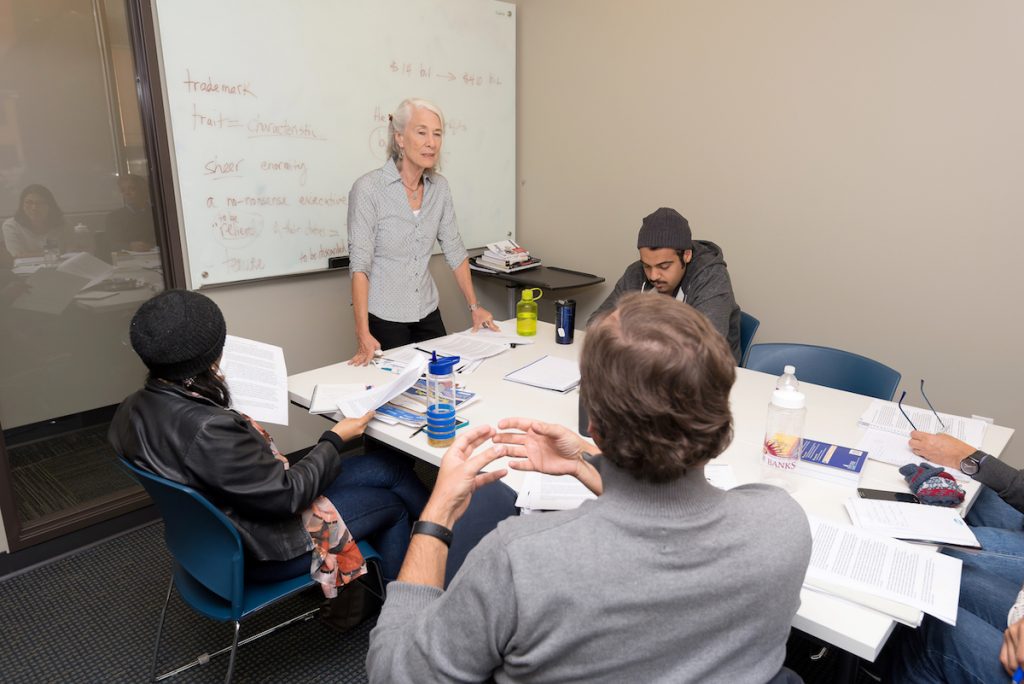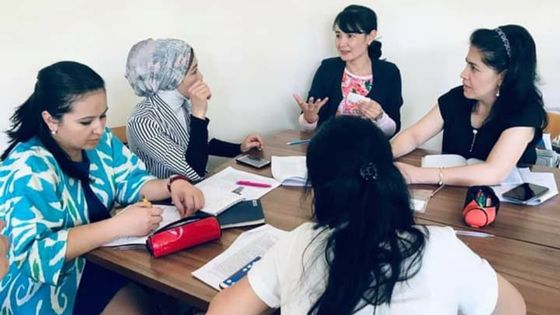Critical thinking has become a central concept in today’s educational landscape, regardless of the subject taught. Critical thinking is not a new idea. It has been present since the time of Greek philosophers like Socrates, Plato, and Aristotle. Socrates’ famous quote, “Education is the kindling of a flame, not the filling of a vessel,” underscores the nature of learning (students are not blank slates to be filled with content by their teachers) and the significance of inquisitiveness in a true learning process, both in the ESL classroom and in the wider world of education. Teaching critical thinking skills in the ESL classroom will benefit your students throughout their language-learning journey.
In more recent times, philosopher John Dewey made critical thinking one of the cornerstones of his educational philosophy. Nowadays, educators often quote critical thinking as the most important tool to sort out the barrage of information students are exposed to in our media-dominated world, to analyze situations and elaborate solutions. Teaching critical thinking skills is an integral part of teaching 21st-century skills.

What is critical thinking?
There are many definitions of critical thinking. They are not mutually exclusive but rather complementary. Some of the main ones are outlined below.
Dewey’s definition
In John Dewey’s educational theory, critical thinking examines the beliefs and preexisting knowledge that individuals use to assess situations and make decisions. If such beliefs and knowledge are faulty or unsupported, they will lead to faulty assessments and decision-making. In essence, Dewey advocated for a scientific mindset in approaching problem-solving.
Goal-directed thinking
Critical thinking is goal-directed. We question the underlying premises of our reflection process to ensure we arrive at the proper conclusions and decisions.
Critical thinking as a metacognitive process
According to Matthew Lipman, in Thinking in Education, “Reflective thinking is thinking that is aware of its own assumptions and implications as well as being conscious of the reasons and evidence that support this or that conclusion. (…) Reflective thinking is prepared to recognize the factors that make for bias, prejudice, and self-deception. It involves thinking about its procedures at the same time as it involves thinking about its subject matter” (Lipman, 2003).
Awareness of context
This is an important aspect of critical thinking. As stated by Diane Halpern in Thought and Knowledge: An Introduction to Critical Thinking, “[The critical] thinker is using skills that are thoughtful and effective for the particular context and type of thinking task” (Halpern, 1996)
What are the elements of critical thinking?
Several elements go into the process of critical thinking.
- Identifying the problem. If critical thinking is viewed mainly as a goal-oriented activity, the first element is to identify the issue or problem one wants to solve. However, the critical thinking process can be triggered simply by observation of a phenomenon that attracts our attention and warrants an explanation.
- Researching and gathering of information that is relevant to the object of inquiry. One should gather diverse information and examine contrasting points of view to achieve comprehensive knowledge on the given topic.
- Evaluation of biases. What biases can we identify in the information that has been gathered in the research phase? But also, what biases do we, as learners, bring to the information-gathering process?
- Inference. What conclusions can be derived by an examination of the information? Can we use our preexisting knowledge to help us draw conclusions?
- Assessment of contrasting arguments on an issue. One looks at a wide range of opinions and evaluates their merits.
- Decision-making. Decisions should be based on the above.

Why is critical thinking important in ESL teaching?
The teaching of critical thinking skills plays a pivotal role in language instruction. Consider the following:
Language is the primary vehicle for the expression of thought, and how we organize our thoughts is closely connected with the structure of our native language. Thus, critical thinking begins with reflecting on language. To help students understand how to effectively structure and express their thinking processes in English, ESL teachers need to incorporate critical thinking in English Language Teaching (ELT) in an inclusive and interesting way.
For ESL students to reach their personal, academic, or career goals, they need to become proficient in English and be able to think critically about issues that are important to them. Acquiring literacy in English goes hand in hand with developing the thinking skills necessary for students to progress in their personal and professional lives. Thus, teachers need to prioritize the teaching of critical thinking skills.
How do ESL students develop critical thinking skills?

Establishing an effective environment
The first step in assisting the development of critical thinking in language learning is to provide an environment in which students feel supported and willing to take risks. To express one’s thoughts in another language can be a considerable source of anxiety. Students often feel exposed and judged if they are not yet able to communicate effectively in English. Thus, the teacher should strive to minimize the “affective filter.” This concept, first introduced by Stephen Krashen, posits that students’ learning outcomes are strongly influenced by their state of mind. Students who feel nervous or anxious will be less open to learning. They will also be less willing to take the risks involved in actively participating in class activities for fear that this may expose their weaknesses.
One way to create such an environment and facilitate students’ expression is to scaffold language so students can concentrate more on the message/content and less on grammar/accuracy.
Applying context
As mentioned above, an important aspect of critical thinking is context. The information doesn’t exist in a vacuum but is always received and interpreted in a specific situational and cultural environment. Because English learners (ELs) come from diverse cultural and language backgrounds and don’t necessarily share the same background as their classmates and teacher, it is crucial for the teacher to provide a context for the information transmitted. Contextualization helps students to understand the message properly.
Asking questions
One of the best ways to stimulate critical thinking is to ask questions. According to Benjamin Bloom’s taxonomy (Taxonomy of Educational Objectives, 1956), thinking skills are divided into lower-order and higher-order skills. Lower-order skills include knowledge, comprehension, and application; higher-order skills include analysis, synthesis, and evaluation. To stimulate critical thinking in ELT, teachers need to ask questions that address both levels of thinking processes. For additional information, read this article by the TESL Association of Ontario on developing critical thinking skills in the ESL classroom.
Watch the following clip from a BridgeUniverse Expert Series webinar to learn how to set measurable objectives based on Bloom’s Taxonomy (watch the full webinar – and others! – here):
How can we implement critical thinking skills in the ESL classroom?
Several activities can be used in the ESL classroom to foster critical thinking skills. Teaching critical thinking examples include:
Activities that scaffold language and facilitate students’ expression
These can be as basic as posting lists of important English function words like conjunctions, personal and demonstrative pronouns, question words, etc., in the classroom. Students can refer to these tables when they need help to express their thoughts in a less simplistic way or make explicit the logical relation between sentences (because… therefore; if… then; although… however, etc.). There are a variety of methods to introduce new vocabulary based on student age, proficiency level, and classroom experience.
Activities that encourage students to make connections between their preexisting knowledge of an issue and the new information presented
One such exercise consists of asking students to make predictions about what will happen in a story, a video, or any other context. Predictions activate the students’ preexisting knowledge and encourage them to link it with the new data, make inferences, and build hypotheses.
Critical thinking is only one of the 21st-century skills English students need to succeed. Explore all of Bridge’s 21st-Century Teaching Skills Micro-credential courses to modernize your classroom!
Change of perspective and contextualization activities
Asking students to put themselves in someone else’s shoes is a challenging but fruitful practice that encourages them to understand and empathize with other perspectives. It creates a different cultural and emotional context or vantage point from which to consider an issue. It helps assess the merit of contrasting arguments and reach a more balanced conclusion.
One way of accomplishing this is to use a written text and ask students to rewrite it from another person’s perspective. This automatically leads students to adopt a different point of view and reflect on the context of the communication. Another is to use roleplay. This is possibly an even more effective activity. In role-play, actors tend to identify more intimately with their characters than in a written piece. There are other elements that go into acting, like body language, voice inflection, etc., and they all need to reflect the perspective of the other.
Collaborative activities
Activities that require students to collaborate also allow them to share and contrast their opinions with their peers and cooperate in problem-solving (which, after all, is one of the goals of critical thinking). Think/write-pair-share is one such activity. Students are asked to work out a problem by themselves and then share their conclusions with their peers. A collaborative approach to learning engages a variety of language skill sets, including conversational skills, problem-solving, and conflict resolution, as well as critical thinking.
In today’s educational and societal context, critical thinking has become an important tool for sorting out information, making decisions, and solving problems. Critical thinking in language learning and the ESL classroom helps students to structure and express their thoughts effectively. It is an essential skill to ensure students’ personal and professional success.








